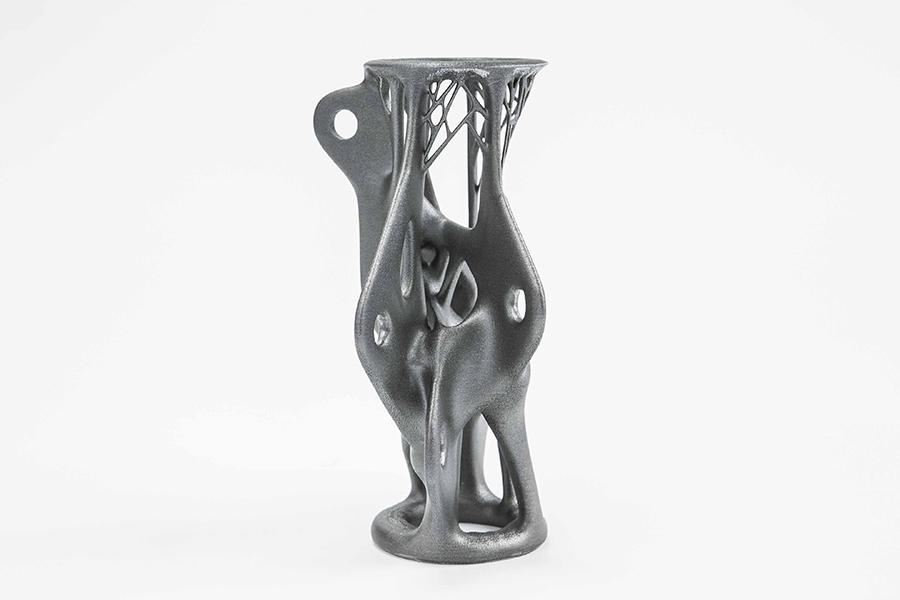Arup Develops 3D Printed Construction-grade Steel Structures

Arup’s prototype steel support node. Courtesy of Arup.
Latest News
June 9, 2014
A few years ago most people had probably never heard of additive manufacturing (AM), now it’s becoming difficult to find a field that doesn’t benefit from the technology. One particular field that is ripe for further development is AM in construction. Most AM experiments in construction have been focused on building entire structures using the technology, but there are plenty of other ways in which AM could make an impact in construction.
Arup, the company responsible for the structural design of the Sydney Opera House, has launched a program dedicated to producing structural steel elements by harnessing the power of 3D printing. The company began its look at AM in construction over a year ago, and couldn’t find any significant research being done in the field, so began working on the problem with partners such as EOS.
 Arup’s prototype steel support node. Courtesy of Arup.
Arup’s prototype steel support node. Courtesy of Arup.The result is an AM process that can produce steel support nodes which have applications for a number of different types of construction. During the course of its research, Arup came to much the same conclusions about AM in construction as did those companies specializing in aerospace. Parts (in this case made out of steel rather than titanium) manufactured using AM were just as strong as their traditionally manufactured counterparts, while requiring less materials, time, and energy to produce.
“By using additive manufacturing we can create lots of complex individually designed pieces far more efficiently,” said Salomé Galjaard, team leader, Arup. “This has tremendous implications for reducing costs and cutting waste. But most importantly, this approach potentially enables a very sophisticated design, without the need to simplify the design in a later stage to lower costs.”
During the research and prototyping process Arup built some 1,200 steel support nodes, gradually refining the process along the way. The team expects to further reduce the materials used to manufacture an end-use product, without a corresponding loss in structural strength. While the research team acknowledges that support nodes constructed using traditional processes are currently less expensive to manufacture, they claim that is a short-term problem.
Continued research will undoubtedly uncover other beneficial aspects to using AM in construction, such as easier-to-produce custom pieces for construction. Even if you never live in a home built using a giant 3D printer, it seems likely that future buildings will incorporate AM products in some way.
Below you’ll find a video about Arup’s work revitalizing King’s Cross Station.
Subscribe to our FREE magazine, FREE email newsletters or both!
Latest News
About the Author
John NewmanJohn Newman is a Digital Engineering contributor who focuses on 3D printing. Contact him via [email protected] and read his posts on Rapid Ready Technology.
Follow DERelated Topics






